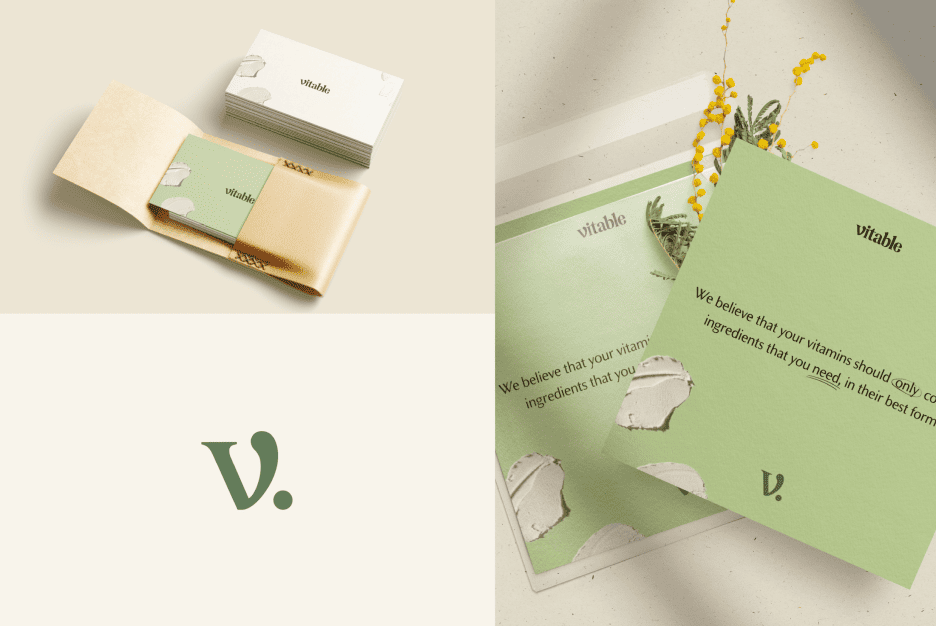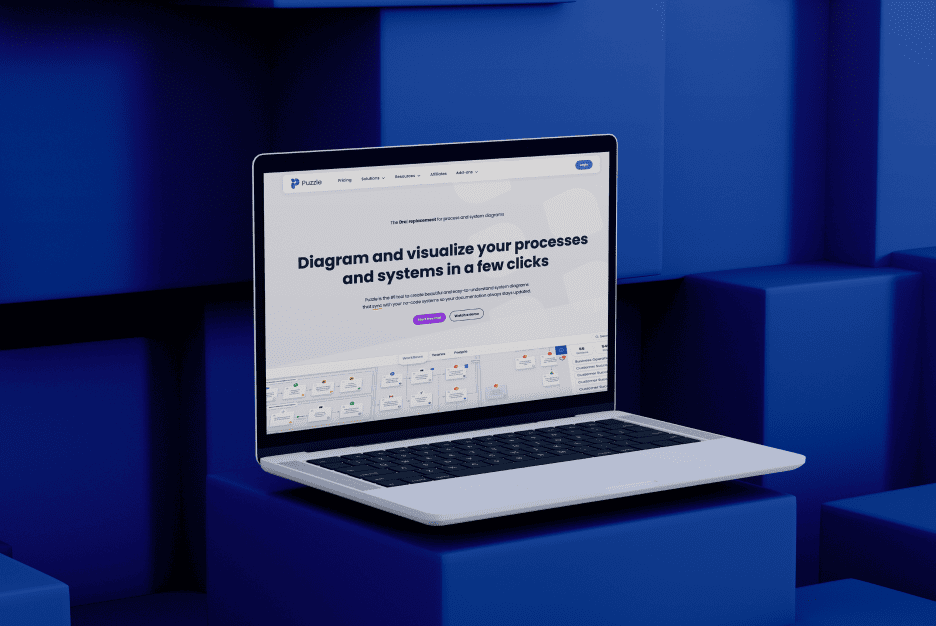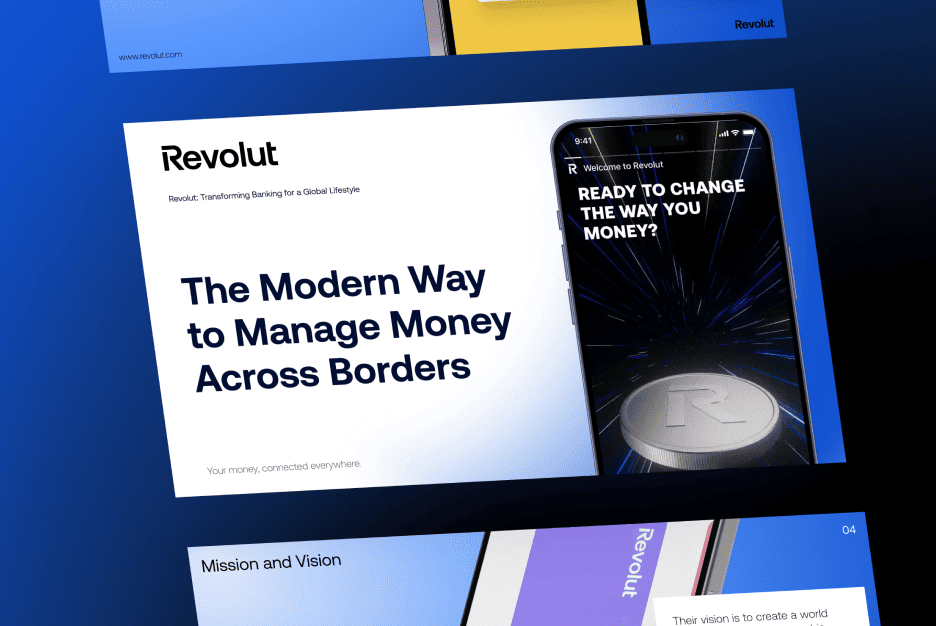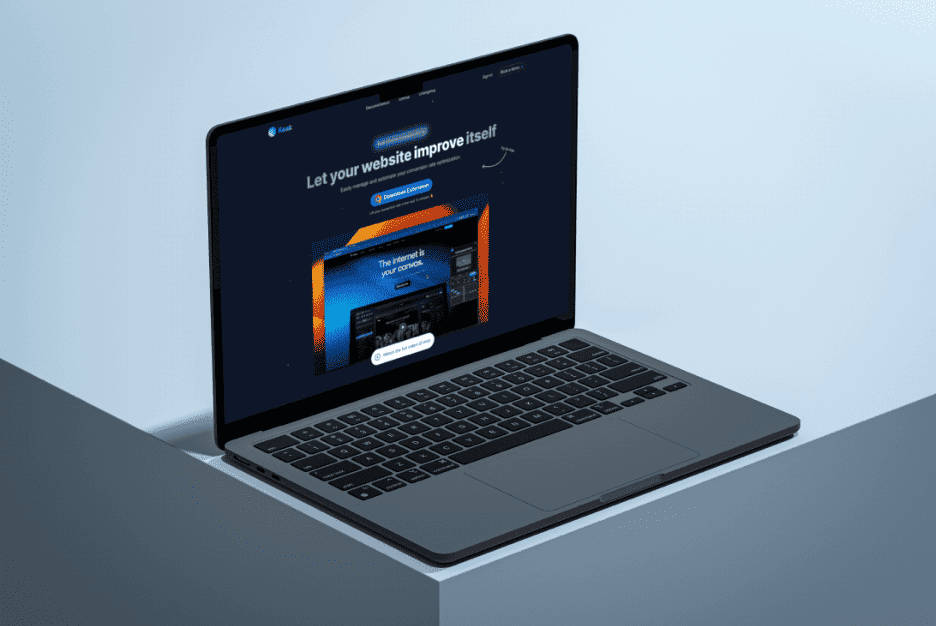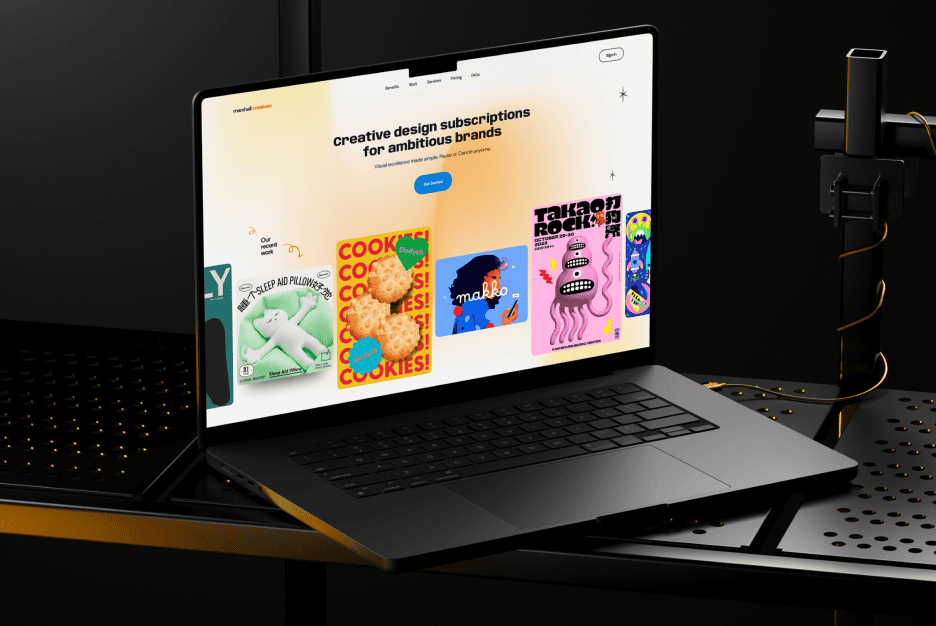In the rapidly evolving digital landscape, cryptocurrency projects require a unique approach to web design. Unlike traditional industries, crypto-based platforms often emphasize decentralized systems, complex data visualization, and user education. To achieve seamless user experiences, the design must balance functionality, trust-building, and accessibility.
This article delves into the key design considerations for cryptocurrency projects, exploring user flows, interface features, and design patterns that set them apart. Whether you’re creating a crypto wallet, a decentralized finance (DeFi) platform, or a blockchain-based marketplace, these insights will help you craft designs that resonate with your audience.
Types of Crypto Websites and Platforms
The cryptocurrency ecosystem is diverse, encompassing a wide range of websites and platforms, each serving distinct purposes. Understanding these types is crucial for tailoring web design strategies to their unique needs.
1. Cryptocurrency Exchanges
Cryptocurrency exchanges are platforms that allow users to trade cryptocurrencies for fiat or other digital assets. Examples include Binance, Coinbase, and Kraken. Key features include:
- Real-time trading data and charts.
- User-friendly navigation for buy/sell functions.
- Robust security features, such as two-factor authentication and cold wallet storage.
Dive deeper into how to design intuitive trading interfaces and attract more users to your crypto exchange platform.

2. Crypto Wallets
Crypto wallets enable users to store, send, and receive digital assets securely. They come in two main types:
- Hot wallets: Online wallets connected to the internet (e.g., MetaMask, Trust Wallet).
- Cold wallets: Offline storage solutions, often in the form of hardware devices (e.g., Ledger, Trezor).
Key design considerations include:
- A simple, intuitive interface for beginners.
- Integration with QR code scanning for quick transactions.
- Clear representation of wallet balances and transaction history.
Learn more about improving UX Plan to help beginners feel confident in managing digital assets.
3. Decentralized Finance (DeFi) Platforms
DeFi platforms offer financial services such as lending, staking, and yield farming without intermediaries. Popular examples include Aave and Uniswap. Design priorities include:
- Transparent data visualization for APYs (Annual Percentage Yields) and fees.
- Seamless wallet connectivity.
- Educational elements to help users navigate complex DeFi tools.
Need tips on integrating data visualization? Check out this article with best practices and our article about dashboard widgets to craft intuitive DeFi dashboards.
4. NFT Marketplaces
NFT (Non-Fungible Token) marketplaces, such as OpenSea and Rarible, allow users to buy, sell, and showcase digital collectibles. Critical design elements include:
- Dynamic galleries for showcasing NFT artwork.
- Filter and search tools to navigate large inventories.
- Features for bidding and real-time price updates.
5. Blockchain-Based Apps (dApps)
Decentralized applications (dApps) span a wide range of industries, from gaming (e.g., Axie Infinity) to supply chain tracking. dApp design should focus on:
- Onboarding flows to guide users through wallet connection and permissions.
- Responsive, mobile-friendly layouts.
- Integration of blockchain-specific features, such as transaction explorers.

Understanding the Unique Needs of Crypto Users
1. Building Trust Through Visual Design
Crypto projects operate in an industry that faces skepticism from mainstream audiences due to its association with volatility and scams. To establish trust:
- Implement clean and consistent branding, avoiding overly flashy or exaggerated claims.
- Include certifications, team profiles, and links to transparent documentation (e.g., whitepapers).
- Incorporate dark mode options to appeal to crypto-savvy users who often prefer sleek, modern designs.
💡 Example: Coinbase emphasizes trust by showcasing security measures and compliance with regulations on its homepage.
🔗 Read about branding strategies for trust-building in the digital finance sector.
2. Simplifying Complex Processes
Cryptocurrency platforms often require users to grasp technical concepts like private keys, staking rewards, and gas fees. Effective design can help:
- Use simple, jargon-free language alongside visual aids, such as illustrations or explainer animations.
- Provide real-time feedback to users during critical actions, such as signing transactions or connecting wallets.
If you want to know details of this process, read more about our case for decentralized investment bank.
Key User Flows in Crypto Project Web Design
1. Onboarding New Users
Onboarding is a pivotal flow in crypto web design, as it directly impacts a user’s first impression and confidence in navigating the platform. Effective onboarding begins with introducing users to the platform’s functionality in a way that minimizes intimidation and maximizes clarity. For example, implementing step-by-step walkthroughs can simplify complex processes like wallet setup or completing an initial transaction. Visual cues and progress indicators provide clarity on where users are in the process, reducing drop-off rates.
A successful onboarding experience also adapts to different user personas. For instance, offering beginner and advanced profiles allows users to customize their experience based on their familiarity with cryptocurrency. This tailored approach makes it easier for novice users to feel welcomed while still catering to more experienced users seeking advanced features. Additionally, gamification can play a critical role here: incorporating elements such as milestone rewards for completing basic setup tasks, verifying an email, or linking a wallet can encourage engagement and create a sense of achievement.
Ultimately, onboarding is more than just a welcome process—it’s the foundation for user retention. By making it intuitive, informative, and rewarding, crypto platforms can turn skeptics into loyal users.
2. Wallet Integration and Transaction Flows
Wallet integration is a cornerstone of most cryptocurrency platforms, as it enables users to connect their assets and perform essential transactions. However, the integration process must be seamless and secure to ensure user confidence. Using tools like WalletConnect or other universal connectors allows platforms to accommodate a wide range of wallets, from MetaMask to Trust Wallet, minimizing compatibility issues and making it easier for users to get started.
An essential feature in this flow is the transaction preview. Users need detailed, real-time information before confirming any transaction, including the estimated gas fees, total costs, and processing times. Transparency in these stages fosters trust and reduces the likelihood of mistakes, such as overpaying fees or misdirecting funds. Additionally, platforms must prioritize clear and actionable error messages during the transaction process. For instance, instead of generic “Error 404” messages, the interface should guide users with suggestions to resolve common issues, like insufficient funds or wallet disconnection.
The goal here is not only to facilitate transactions but to make users feel empowered and secure while doing so. Thoughtful design decisions, such as confirming transactions in a few intuitive steps and visualizing transaction progress, can make a significant difference in how users perceive the platform’s reliability.
3. Account Management and Dashboard Flows
A well-designed dashboard serves as the central hub for any crypto platform, providing users with a comprehensive overview of their assets and activity. Dashboards should go beyond basic balance information and include insights into recent transactions, staking rewards, or portfolio performance. This data should be presented in an organized and visually digestible format, making it easy for users to scan key metrics at a glance.
For more advanced users, links to detailed features such as transaction histories, tax reports, or advanced trading tools can be prominently displayed. Widgets can further enhance functionality by allowing users to track cryptocurrency prices in real time, monitor staking rewards, or even compare performance across different assets. The ability to customize these widgets based on personal preferences is a powerful way to cater to both casual users and power traders.
Moreover, intuitive account management features, such as editing personal details or adjusting security settings, should be easily accessible from the dashboard. These small yet impactful touches ensure that users spend less time navigating and more time engaging with the platform’s core features.

Interface Features for Crypto Platforms
1. Data Visualization
Data visualization is one of the most critical aspects of crypto web design, as users rely on clear and actionable insights to make informed decisions. A well-designed platform leverages tools such as line charts, bar graphs, and heatmaps to convey complex data in a digestible format. For example, traders may benefit from charts that show price movements over time, while DeFi users might need visual representations of annual percentage yields (APYs) or staking rewards.
Platforms should also allow users to toggle between different time frames and data sets to customize their analysis. For instance, a user looking at Bitcoin’s price trends may want to switch between hourly, daily, or monthly data with ease. Interactive elements, such as tooltips or drill-downs, can enhance the experience by offering deeper insights without cluttering the interface.
Ultimately, the goal is to present information in a way that feels actionable and intuitive. Whether it’s monitoring portfolio performance or analyzing market trends, effective data visualization transforms complex cryptocurrency concepts into user-friendly tools.
2. Mobile Optimization
With many users accessing cryptocurrency platforms via their smartphones, mobile optimization is no longer optional—it’s essential. A mobile-first design approach ensures that the interface performs seamlessly on smaller screens while maintaining its full functionality. Responsive grids are key to this process, automatically adapting layouts to fit any device size without compromising usability.
Large, tappable buttons are particularly important for actions like signing transactions or copying wallet addresses, as they reduce the likelihood of errors caused by small touch targets. Additionally, integrating biometric authentication—such as Face ID or Touch ID—can streamline the login process, offering users both convenience and security.
Mobile design should also consider connectivity issues and load times, as these factors significantly impact the user experience. By prioritizing lightweight assets and responsive animations, platforms can create fast, efficient mobile experiences that keep users engaged, no matter where they are.
3. Security-First UI Elements
In the world of crypto, security is paramount, and the UI must reflect this priority. Trust-building features such as real-time transaction progress updates and clear error messages are critical in reassuring users of the platform’s reliability. For instance, when interacting with smart contracts, the interface should display warnings about potential risks or unknown permissions to help users avoid malicious actors.
Additionally, platforms should integrate features like session timeouts and prominent logout buttons to ensure users maintain control of their accounts. Security-first design also includes visual cues, such as padlock icons or warnings when users interact with unverified wallets or addresses. These details not only enhance security but also demonstrate the platform’s commitment to safeguarding its users.
By embedding security measures directly into the design, crypto platforms can foster confidence and encourage more users to engage with their services.

Design Patterns for Crypto Web Projects
1. Modular Dashboards
The concept of modular dashboards has revolutionized crypto platform design by offering flexibility and personalization. Users should be able to customize their dashboard view by adding, rearranging, or removing widgets. For example, a trader might prioritize a price chart widget, while a long-term investor may focus on staking rewards or portfolio growth.
Collapsible sections are another useful feature, allowing users to hide less relevant information and focus on what matters most. This minimizes visual clutter while still keeping additional details easily accessible. The modular approach ensures that the platform caters to both casual users and advanced traders, providing a tailored experience for every user type.
2. Gamification for Engagement
Gamification has proven to be a highly effective strategy for boosting user engagement in crypto platforms. By incorporating features like leaderboards for trading competitions or streaks for completing daily tasks, platforms can motivate users to stay active. For instance, rewarding users for checking in daily or completing tutorials can encourage them to explore more of the platform’s features.
Badges, achievements, and point systems can further gamify the experience, turning mundane actions into rewarding interactions. This not only keeps users engaged but also fosters a sense of loyalty and community within the platform.
3. Thematic Branding
Branding plays a crucial role in setting crypto platforms apart in a crowded marketplace. Many platforms leverage futuristic design elements to evoke innovation and cutting-edge technology. Gradients in colors like purple, blue, and neon green are popular choices, creating a sleek, modern aesthetic that appeals to tech-savvy users.
Animations and micro-interactions can add depth and energy to the interface, making it feel more dynamic and engaging. Meanwhile, typography should balance innovation with readability, using fonts that feel bold yet professional.
Thematic branding not only creates a memorable visual identity but also strengthens the emotional connection between users and the platform, leaving a lasting impression.
Conclusion
Designing for cryptocurrency platforms is a challenging yet rewarding task. By understanding the unique needs of crypto users and implementing tailored design patterns, you can create platforms that foster trust, simplify complex workflows, and encourage engagement.
For more expert insights into UX, UI, branding, and development, visit the Almax Agency Blog. Whether you’re building a crypto wallet, exchange, or DeFi platform, we have the resources to help you succeed in this cutting-edge space.

